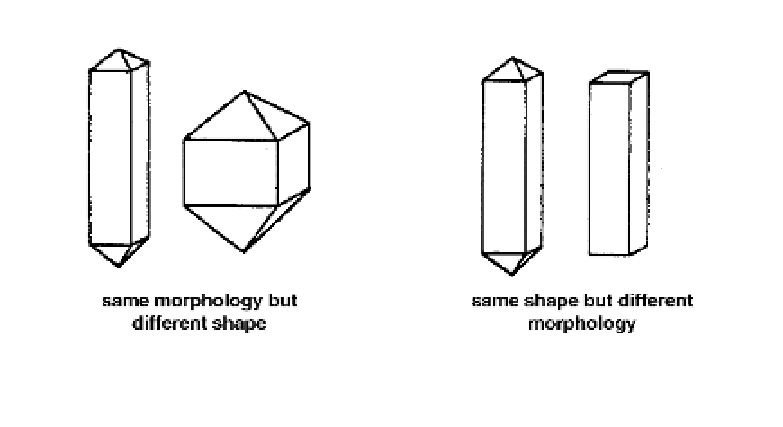Biology Reference
In-Depth Information
Fig. 5.
Crystal habit and morphology. Habit is the same as shape and refers to the over-
all appearance of the particle. Morphology refers to the faces that are exposed.
The individual particles in a sample of crystalline material normally
differ with regard to both size and shape. After careful analysis, however,
it is generally found to be the case that all particles present the same faces
(even though for certain particles, some surfaces may be so small that they
are invisible). Figure 5 shows the difference between the concepts of
morphology and shape (habit).
As shown in the figure, the same morphology means that the crystal
structure is identical and accordingly the same faces in principle are
expressed, even though their relative sizes may differ. The same shape or
habit means that the overall shape of the crystals appears to be similar.
The three particles in Fig. 6 have equivalent morphology but different
shape. The three particles all have the same surfaces present, but they vary
in relative size. The arrows aim to illustrate the growth vectors of the
faces. A long arrow means fast growing. The particle on the left is domi-
nated by the two large, horizontal surfaces at the top and bottom, which
results in a flat, tablet-like shape. The particle on the right is dominated by
the elongated vertical surfaces, giving the particle a rod-like, almost nee-
dle-like, shape. The horizontal surfaces of the particle on the left are rela-
tively large because the growth of these surfaces (perpendicular to the
surface) is slow, as is illustrated by a short growth vector. The particle on
the right becomes elongated because the same surfaces grow quickly in
relation to the lateral surfaces. In this manner, the shape of a crystal is



Search WWH ::

Custom Search